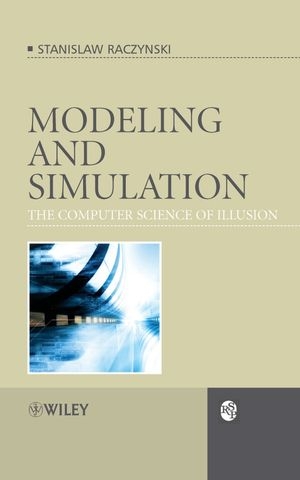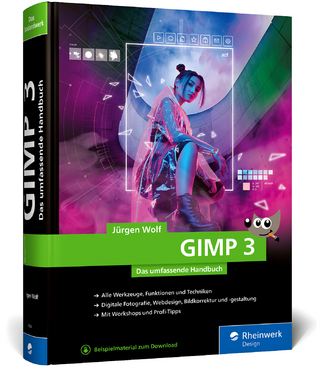
Modeling and Simulation
John Wiley & Sons Inc (Verlag)
978-0-470-03017-2 (ISBN)
- Titel ist leider vergriffen;
keine Neuauflage - Artikel merken
Simulation is the art of using tools – physical or conceptual models, or computer hardware and software, to attempt to create the illusion of reality. The discipline has in recent years expanded to include the modelling of systems that rely on human factors and therefore possess a large proportion of uncertainty, such as social, economic or commercial systems. These new applications make the discipline of modelling and simulation a field of dynamic growth and new research. Stanislaw Raczynski outlines the considerable and promising research that is being conducted to counter the problems of uncertainty surrounding the methods used to approach these new applications. It aims to stimulate the reader into seeking out new tools for modelling and simulation.
Examines the state-of-the-art in recent research into methods of approaching new applications in the field of modelling and simulation
Provides an introduction to new modelling tools such as differential inclusions, metric structures in the space of models, semi-discrete events, and use of simulation in parallel optimization techniques
Discusses recently developed practical applications: for example the PASION simulation system, stock market simulation, a new fluid dynamics tool, manufacturing simulation and the simulation of social structures
Illustrated throughout with a series of case studies
Modelling and Simulation: The Computer Science of Illusion will appeal to academics, postgraduate students, researchers and practitioners in the modelling and simulation of industrial computer systems. It will also be of interest to those using simulation as an auxiliary tool.
Stanislaw Raczynski is a professor of control theory, electronics and computer simulation at the Panamerican University in Mexico City. He is also the international director of the Socirty for Modelling Simulation in San Diego. He has authored 1 book, “Simulacion por computadora” and over 70 journal articles & conference papers.
Editorial Foreword. Preface.
Chapter 1. Basic Concepts and Tools.
1.1. Modeling and simulation: What is it ?.
1.2. Validity, credibility, tractability and verification.
1.3. System state and causal systems.
1.4. Classification of dynamical systems.
1.5. Discrete and continuous simulation.
1.6. Evolution of simulation software.
Chapter 2. Continuous simulation.
2.1. Introduction.
2.2 Ordinary differential equations and models of concentrated parameter systems.
2.3. Continuous simulation with analog computers.
2.4. Numerical methods for ordinary differential equations (ODE).
2.5. Signal flow graphs.
2.6. Bond graphs.
2.7. Alternative modeling tools and dynamic uncertainty.
2.8. Distributed parameter systems.
2.9. System dynamics.
2.10. Galactic simulations and the N-body problem.
Chapter 3. Discrete and combined simulation – example of PASION implementation.
3.1. Are discrete models valid?.
3.2. PASION simulation system.
3.3. Queuing Model Generator QMG.
3.4. Complex system simulator of PASION.
Chapter 4. Differential inclusions in Modeling and Simulation.
4.1. Differential inclusions.
4.2. Possible applications.
4.3. Differential inclusion solver.
4.4. Application in uncertainty treatment.
4.5. Uncertain future and differential inclusions.
4.6. Conclusions and future research.
Chapter 5. Fluid dynamics – simulating oscillating gas flow.
5.1. Computational fluid dynamics.
5.2. Numerical problems.
5.3. The simulation tool.
5.4. Examples.
5.5. Oscillating gas flow.
5.6. Two-dimensional fluid-dynamics models are invalid.
5.7. Conclusions.
Chapter 6. Simulating Phenomena of General Relativity.
6.1. Some basic concepts.
6.3. The simulation tool and model time.
6.4. Simulation experiments.
Chapter 7. Interactions between hostile hierarchical structures: simulation of the struggle between terrorist and anti-terrorist organizations.
7.1. Introduction.
7.2. The model.
7.3. Structures.
7.4. The tool and the model implementation.
7.5. Simulation experiments.
7.6. Conclusions.
Chapter 8. On a metric structure in the space of dynamic system models.
8.1. DEVS.
8.2. Definitions.
8.3. Distance between models.
8.4. Examples.
8.5. Conclusions.
Chapter 9. Simulation optimization: A case study of a parallel optimization algorithm.
9.1. Introduction.
9.2. Problem statement.
9.3. Simulation experiment.
9.4. Conclusions.
References.
Index.
| Erscheint lt. Verlag | 21.4.2006 |
|---|---|
| Reihe/Serie | RSP Bird |
| Verlagsort | New York |
| Sprache | englisch |
| Maße | 157 x 234 mm |
| Gewicht | 510 g |
| Themenwelt | Informatik ► Grafik / Design ► Digitale Bildverarbeitung |
| Mathematik / Informatik ► Informatik ► Theorie / Studium | |
| Technik ► Elektrotechnik / Energietechnik | |
| ISBN-10 | 0-470-03017-8 / 0470030178 |
| ISBN-13 | 978-0-470-03017-2 / 9780470030172 |
| Zustand | Neuware |
| Informationen gemäß Produktsicherheitsverordnung (GPSR) | |
| Haben Sie eine Frage zum Produkt? |
aus dem Bereich


